ACQUISTIONS
Audio Diaries Documenting the COVID-19 Pandemic Join Collections of the Library of Congress
More than seven hundred audio recordings created by over two hundred healthcare workers at the height of the COVID-19 pandemic will be preserved at the Library of Congress’s American Folklife Center thanks to a donation from The Nocturnists, a San Francisco-based collective that produces podcasts and live shows centered on stories from the medical field. The Nocturnists originally gathered the audio diaries—intimate documents of the fears, frustration, and exhaustion experienced by healthcare workers during the crisis—for two podcast series that debuted in 2020, “Stories from a Pandemic” and “Black Voices in Healthcare,” a 2021 Webby honoree. Recordings collected for the follow-up series “Stories from a Pandemic, Part II” are slated for future donation. The audio diaries will complement the Library of Congress’s growing collections of posters, photography, and online media related to the pandemic.
Dartmouth’s Hood Museum of Art Acquires John Kobal Collection of Classical Hollywood Photographs
A cache of iconic images of Hollywood stars amassed by film historian and collector John Kobal are headed to Dartmouth College’s Hood Museum of Art. Spanning the entire classical Hollywood era—the earliest images date from 1916 and the most recent from the 1970s—the 6,000-item collection includes production stills, publicity photos, and portraits snapped by renowned photographers like Ernst Haas and Arthur Kales as well as relative unknowns like Ruth Harriet Louise, a rare female photographer working in 1920s and 1930s Hollywood. An exhibit drawing on the collection is slated to open at the museum in Winter 2022.
Photographer Robert Polidori’s Archive Gifted to Briscoe Center for American History
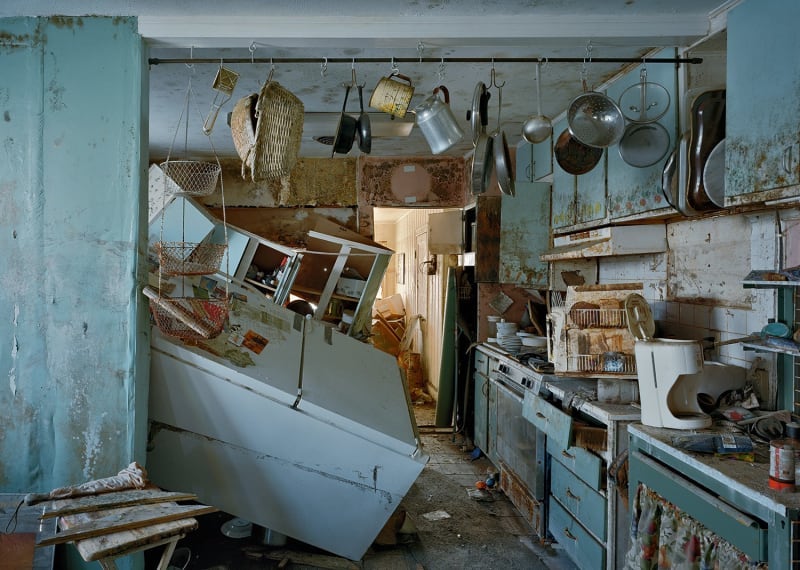
Over 85,000 prints by former New Yorker staff photographer Robert Polidori, known for his richly detailed large-format photographs documenting the built environment, will enter the holdings of the Dolph Briscoe Center for American History at the University of Texas at Austin thanks to a gift from an anonymous Chicago-area family. Polidori’s best-known images register sites of disaster, including Pompeii, Chernobyl, and post-Katrina New Orleans, while his more recent work turns to sites of explosive urban growth like Rio de Janeiro and Mumbai. Polidori’s archive is valued at more than $30 million.
PRESERVATION
British Film Institute and Iron Mountain to Restore Silent Sherlock Holmes Series
On the hundredth anniversary of the launch of Stoll Pictures’ Sherlock Holmes series starring Eille Norwood, the British Film Institute and the data management company Iron Mountain announced a joint initiative to restore the series’ forty-five two-reel films and two features, which have not been seen in their entirety since the 1920s. Part of Iron Mountain’s Living Legacy Initiative, the restoration will draw on surviving publicity materials from the period and the original stories by Arthur Conan Doyle to return the films to their original form and reconstruct missing intertitles. The project is slated for completion in 2023, a hundred years after the release of the series’ final entry, The Sign of Four (Maurice Elvey, 1923).
More information is available here.
INSTITUTIONS AND ORGANIZATIONS
After Outcry, Australia’s National Archives Receive $67.7 Million to Digitize At-Risk Media
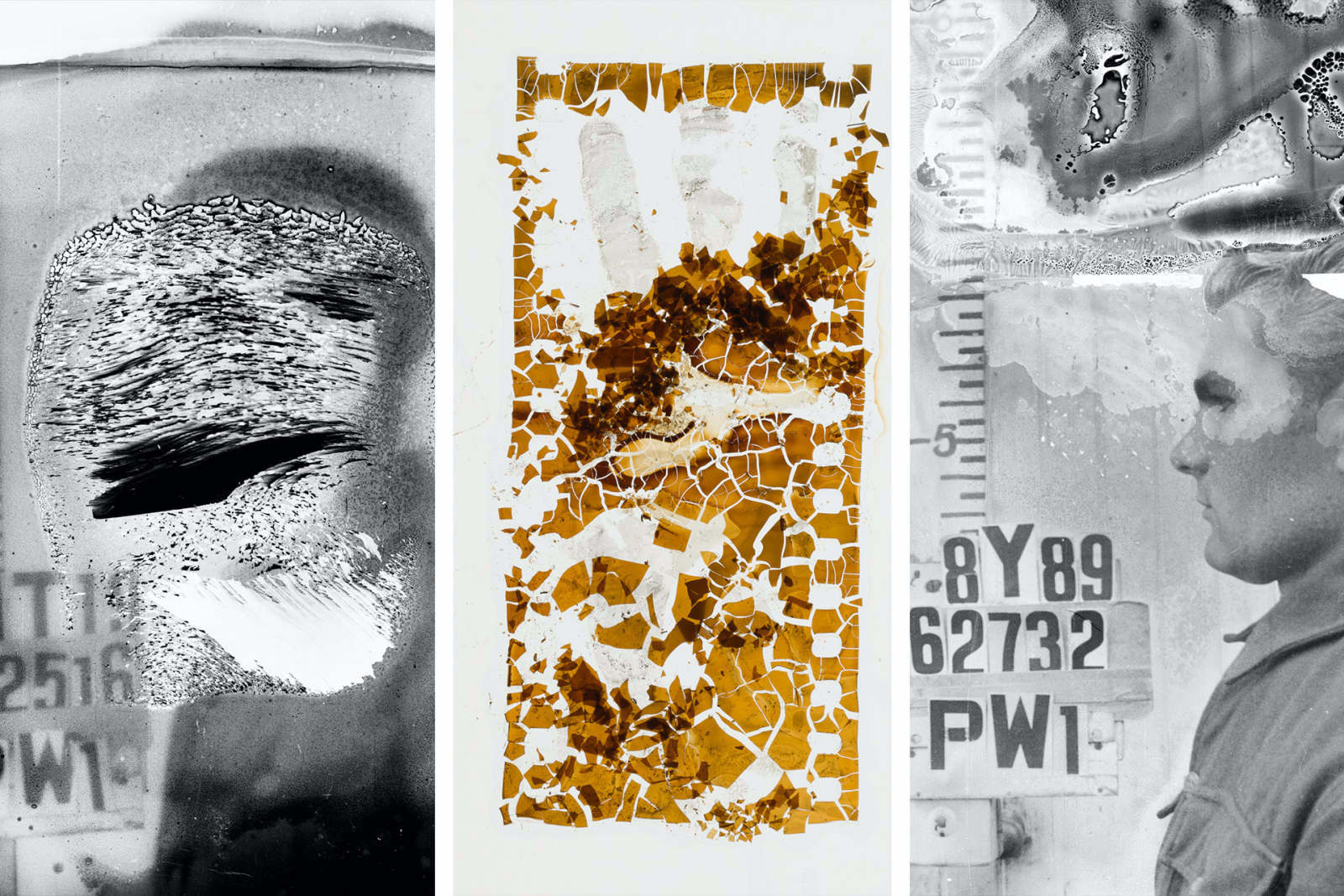
Responding to intense public pressure, Australia’s federal government has allocated AUD$67.7 million towards the National Archives’ urgent push to digitize nearly 300,000 vulnerable sound recordings, films, and other fragile items. A governmental review of the Archives conducted in 2019 and released to the public in March 2021 recommended funding in this amount to transfer high-priority items. While the archive’s most fragile media holdings may become unplayable as early as 2025, at the current rate of digitization, transferring the 384 kilometers of material was estimated to take 1,400 years and cost AUD$5.2 billion. Yet despite large infusions of cash to other institutions, including AUD$500 million for an unpopular expansion of the Australian War Memorial, no increase was granted to the archives, which resorted to soliciting donations on its website. The government reversed its position in late June in the wake of unflattering press coverage and an open letter signed by 150 writers and researchers, including two Nobel laureates.
For more coverage of the controversy, see here, here, and here.
Strong National Museum of Play to Host National Archives of Game Show History

The sole museum in the United States dedicated to preserving the material history of games, the Strong National Museum of Play in Rochester, New York, is set to become a repository of game show history. Television producers Bob Boden and Harold Blumenthal are spearheading efforts to preserve documents of this popular but often overlooked genre’s behind-the-scenes history, including scripts, production designs, marketing materials, and props. Boden’s own collection of ticket stubs from hundreds of game shows will also join the archive’s collection. In addition to making these materials available to researchers and mounting on-site and traveling exhibitions, the museum plans to record oral histories with game shows’ creative teams and contestants.
Construction Begins on Nina Simone Archive in Her North Carolina Hometown
After a decade and a half of collecting and fundraising efforts by the Nina Simone Project, a non-profit devoted to preserving the singer and activist’s legacy, construction has begun on the Nina Simone Archive. The archive will be housed in an existing building facing Nina Simone Plaza, where a sculpture of Simone by artist Zenos Frudakis stands, in her hometown of Tryon, North Carolina.
In addition to Simone’s own papers, which include diaries, recordings, musical scores, and set lists, the archive will host the collections of Simone biographer Sylvia Hampton and Aaron Overfield, who runs the official website for the singer’s estate. A selection of archival documents, including family photos, concert programs and posters, and posthumous tributes, can currently be viewed on the Nina Simone Project website.
Restoration work is also underway on Simone’s childhood home, which was threatened with demolition in 2017.
EXHIBITIONS AND FESTIVALS
Pioneering Video Artist Nam June Paik’s Work Goes on Display at SFMoMA
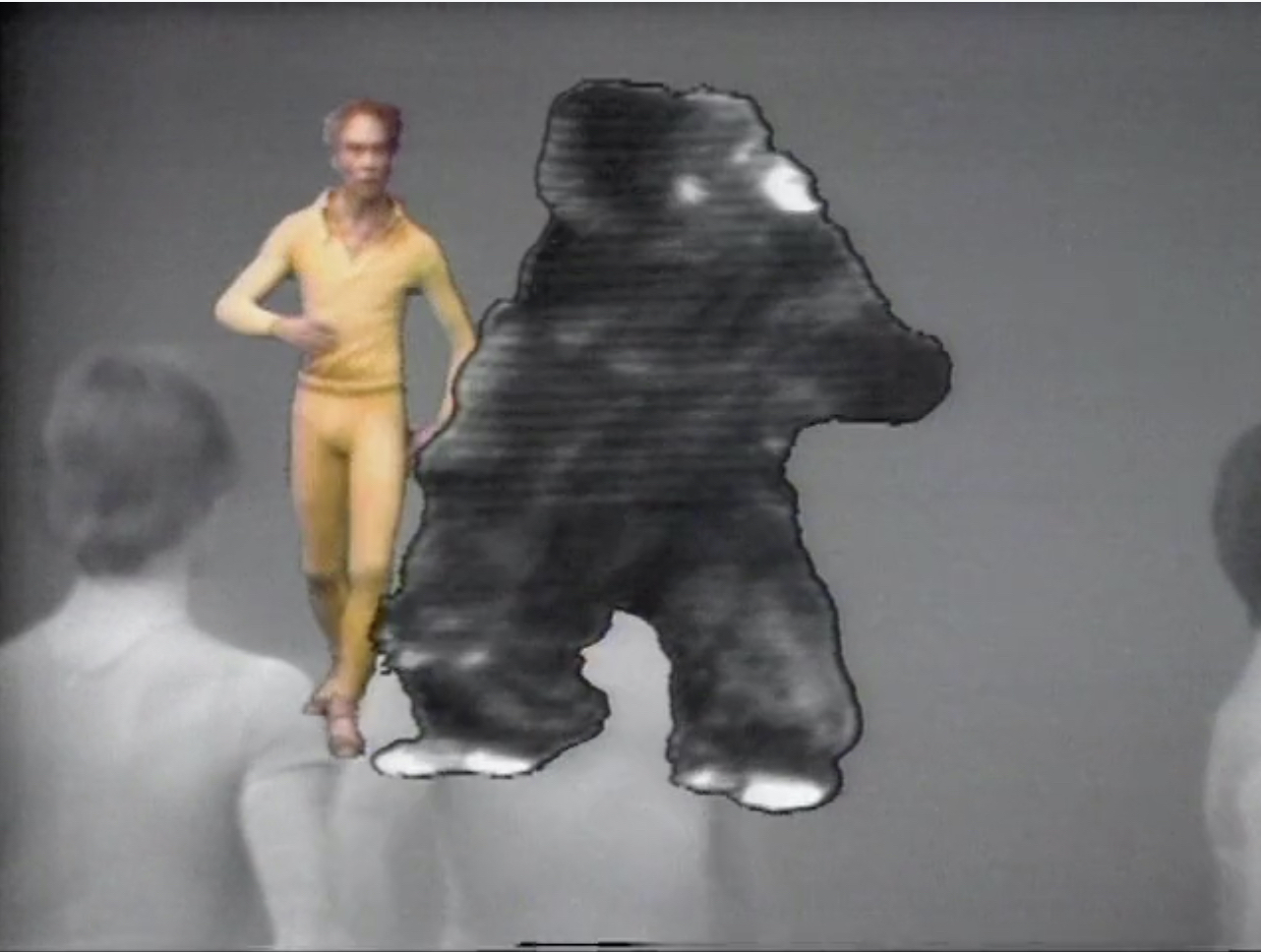
More than two hundred pieces by Korean-born experimental artist Nam June Paik, whose work with television and video presaged today’s media-saturated environments, are now on view at San Francisco’s Museum of Modern Art. Works on display include the immersive video installation Sistine Chapel, recreated for the first time since its 1993 debut at the Venice Biennale; TV Garden (1974-1977), which places nearly fifty television screens playing Paik’s early music video Global Groove (1973) amid lush vegetation, referencing the Buddhist principle of the interconnectedness of all things; and the ultra-minimalist works Zen for Film (1962-1964) and Zen for TV (1963/1990), which strip these media down to their degree zero: a length of transparent film leader and a single scanline.
As a complement to the show, Paik’s 1978 video piece Merce by Merce by Paik Part One: Blue Studio, Five Segments is available to stream at no cost through July 31. An eight-minute selection from Paik’s live television piece Video Commune (Beatles from Beginning to End), created in 1970, can also be viewed on SFMoMA’s website through the exhibit’s closing on October 3.
Virtual Exhibit Makes Experimental Animator Len Lye’s Films Freely Available Online
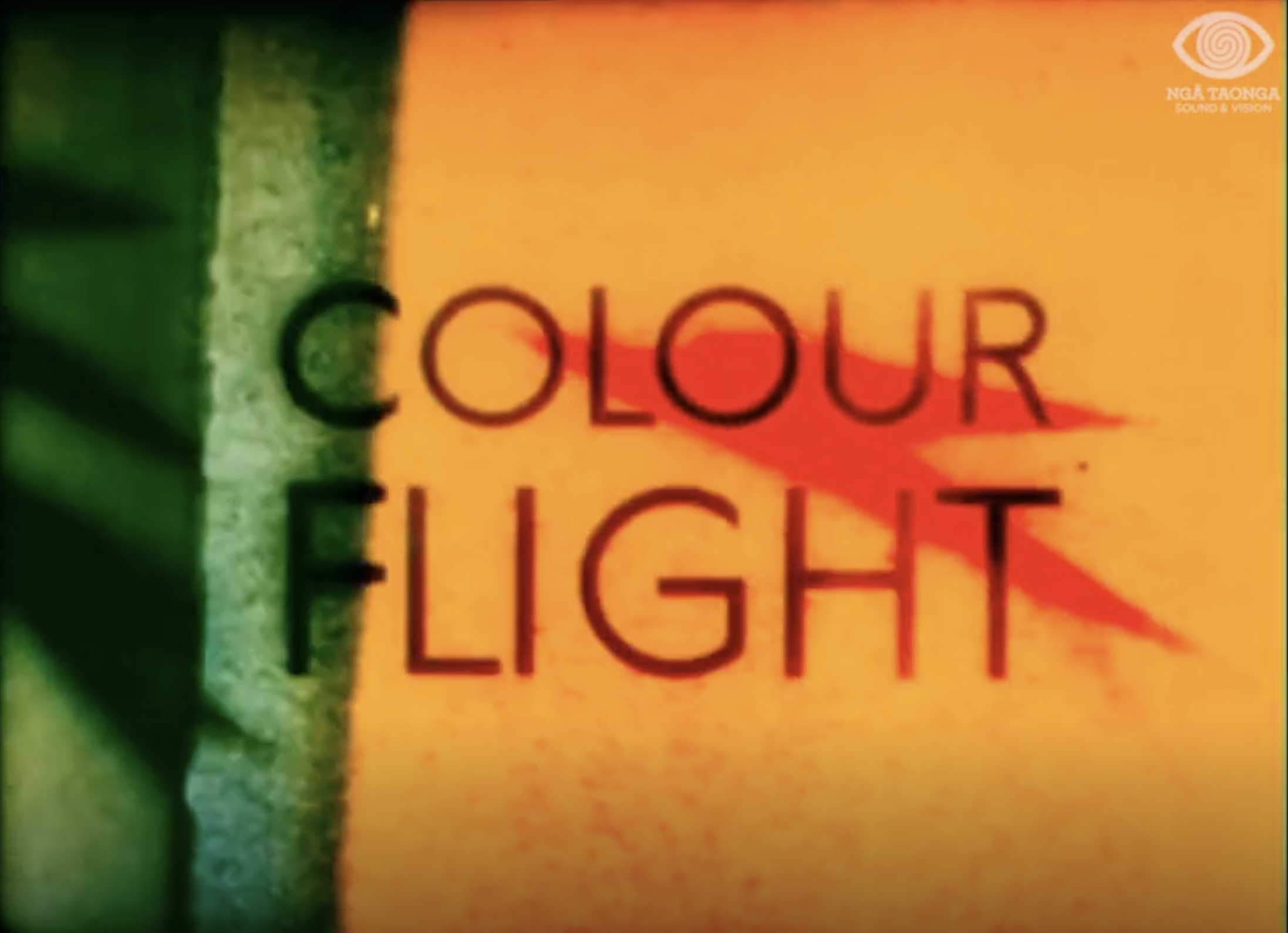
Two dozen films by New Zealand-born modernist artist Len Lye can be streamed cost-free for the first time in the digital exhibit “Free Radical: Len Lye at 120,” organized by New Zealand’s national audiovisual archive Ngā Taonga Sound & Vision, the Len Lye Foundation, and the Govett-Brewster Art Gallery/Len Lye Center. Lye, who worked in the mediums of photography, sculpture, and painting in addition to film, is best known for vibrantly colored, rhythmic animations with abstract elements like his 1937 Trade Tattoo. The exhibit showcases the wide range of animation techniques used by Lye—ranging from stop motion and stenciling to directly scratching the film emulsion—throughout his five decades as a filmmaker.
Disney Props and Artwork Now on View at Memphis’s Graceland
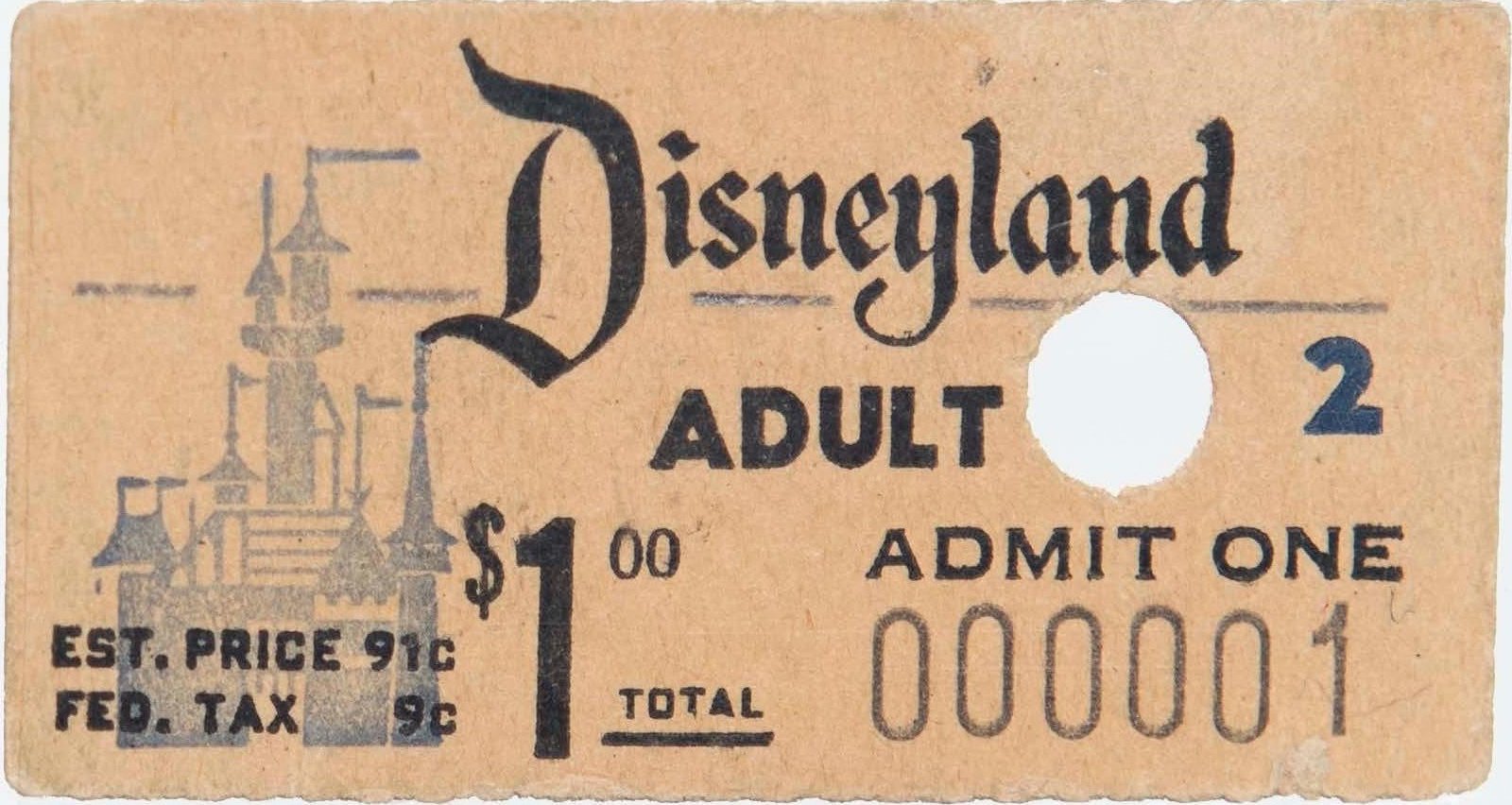
Elvis fans and Disney devotees alike can catch a glimpse of over four hundred and fifty items from popular Disney franchises and films by 20th Century Fox, which the media company acquired in 2019, at the “Inside the Walt Disney Archives” exhibit that debuted at Memphis’s Graceland Exhibition Center in July. Items on display in the show—originally mounted for the D23 (Official Disney Fan Club) Expo Japan in 2018—include the carpet bag carried by Julie Andrews in Mary Poppins (Robert Stevenson, 1964), a futuristic vehicle from Tron (Steven Lisberger, 1982), and sketches from Snow White and the Seven Dwarves (1937), Fantasia (1940), and Frozen (2013).
GRANTS AND AWARDS
Indiana University Grant to Support Creation of Indiana Broadcast History Archive

Indiana University-Bloomington has awarded a $25,000 Public Humanities Project grant for the creation of the Indiana Broadcast History Archive. Journalism professor Mike Conway and archivist Josh Bennett of the IU Media School are creating the archive to showcase existing university collections related to Indiana radio and television history and to acquire and preserve both personal and company archives. With the support of the grant, the IBHA will be creating an interactive website that integrates moving images, audio recordings, photographs, and documents, designed both for the general public and for broadcast historians. The first major acquisition for the new archive is the Howard Caldwell collection. Caldwell was a long-time anchor/reporter at WRTV/WFBM in Indianapolis—the state’s oldest television station—and WTHI in Terre Haute.
More information is available here.
Earliest Known Asian American Film, First Hit of Mexican Sound Cinema to be Safeguarded with Funds from National Film Preservation Foundation
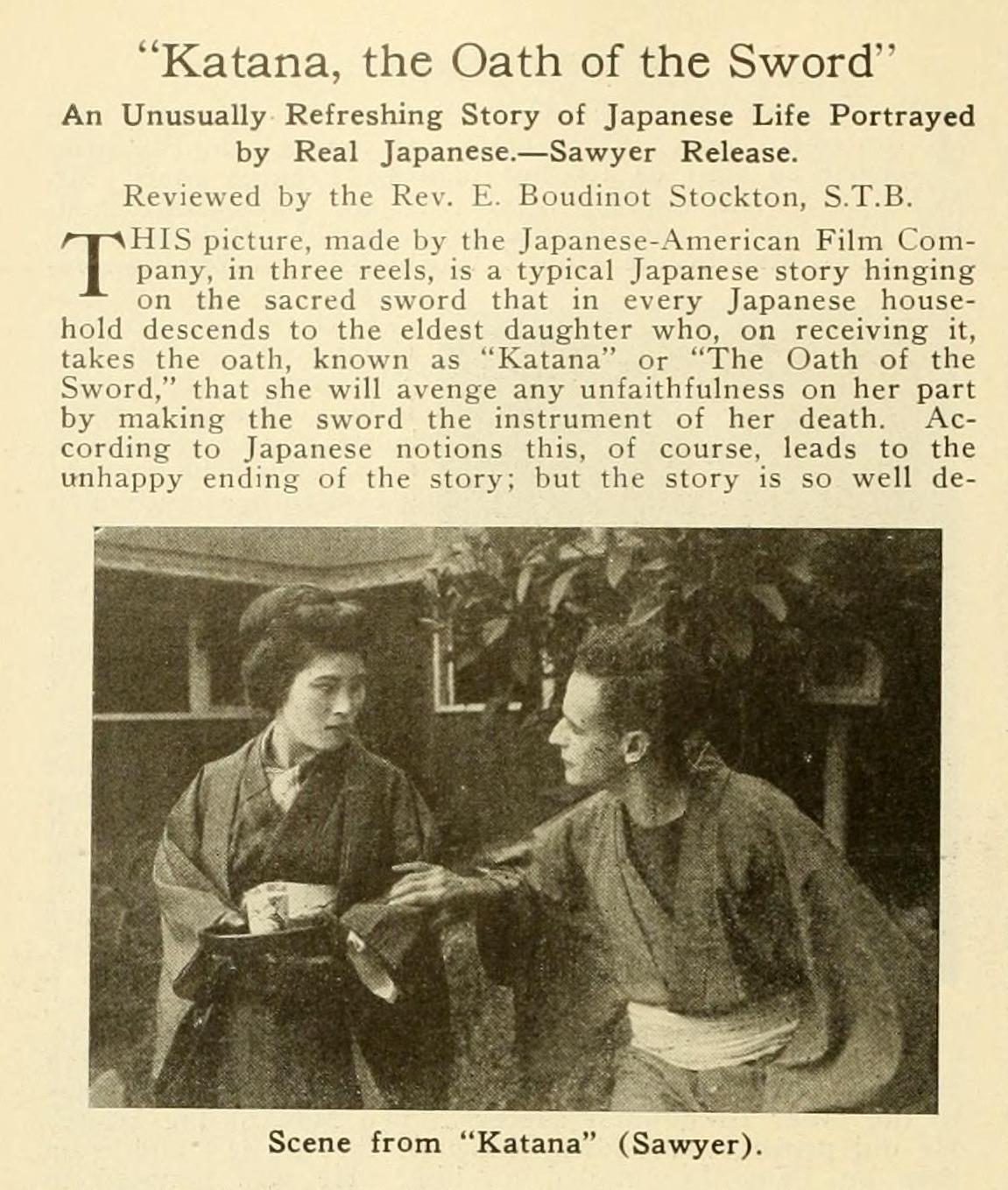
In addition to its longstanding commitment to protect marginalized modes of film production like nontheatrical and avant-garde cinema, in recent years the National Film Preservation Foundation has prioritized the moving-image heritage of underrepresented groups. These aims are reflected in the foundation’s 2021 grants, including awards to the George Eastman Museum and the Japanese American National Museum to preserve The Oath of the Sword, a 1914 production of the Japanese American Film Company, and to the Paso del Norte Community Association to protect Santa (Antonio Moreno, 1931), a milestone of Mexican sound cinema that was produced by the El Paso-based Azteca Films.
The sole surviving copy of The Oath of the Sword, believed to be the first fiction film shot by Asian Americans, was recently rediscovered by Dr. Denise Khor of the University of Massachusetts – Boston at the George Eastman Museum. The film narrates how the love affair between a young Japanese couple, Hisa and Masao, ends in tragedy after Masao travels to the United States to study at Berkeley and Hisa is swept off her feet by an unscrupulous ship’s captain.
Other films to be preserved with NFPF funding include a reel from the sole known print of Charlie Chaplin’s The Gold Rush (1925) that features original tinting; experimental films by Craig Baldwin, Raphael Montañez Ortiz, and Jordan Belson; and amateur, scientific, and promotional films on Latin America held by the American Museum of Natural History, the Pan Am Historical Foundation, and the American Jewish Joint Distribution Committee.
See here for more information; a full list of films to be preserved is available here.
PUBLICATIONS AND DVDS
In Brief:
An article by Marsha Gordon and Dino Everett in Spring/Summer 2021 issue of The American Archivist, “Dusting Off that Old Projector: Preservation through Projection” makes the case that the use of historical projection equipment—especially to present nonstandard gauges like Pathé’s 28mm and 9.5mm or the ultrarare 3mm in their original form—should be considered an integral part of film preservation and a means of safeguarding not only the content of moving images, but also their historical materiality.
ONLINE RESOURCES
A Revamped Memobase, a Digital Portal to Swiss Audiovisual Collections, Debuts Online
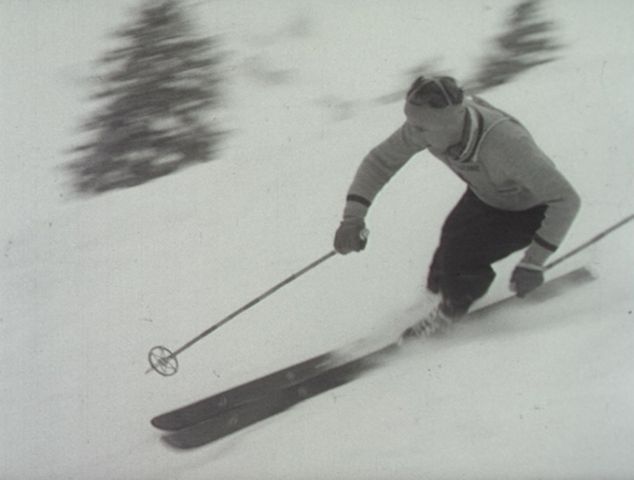
Researchers can now comb through over 400,000 Swiss films, videos, photographs, and sound recordings indexed in the latest version of the Memobase portal. The site aggregates catalog records and audiovisual content from sixty-seven archives and museums in a multilingual database. Memoriav, a consortium of Swiss cultural institutions, partnered with the University of Balê to create the new version of the site, which launched in 2001 and was last revamped in 2013. Approximately 130,000 items can be consulted online, while the remainder may be viewed only onsite or through the network of Memobase+ or FaroWeb computer stations located at libraries, archives, and museums in Switzerland. Highlights of the site include the full run of the Cine-Journal Suisse newsreel (1940-1975) held by the Cinémathèque Suisse and the Swiss National Archives, which can be viewed in its entirety online.
Documents of Latin American Film Preservation History Released by International Federation of Film Archives
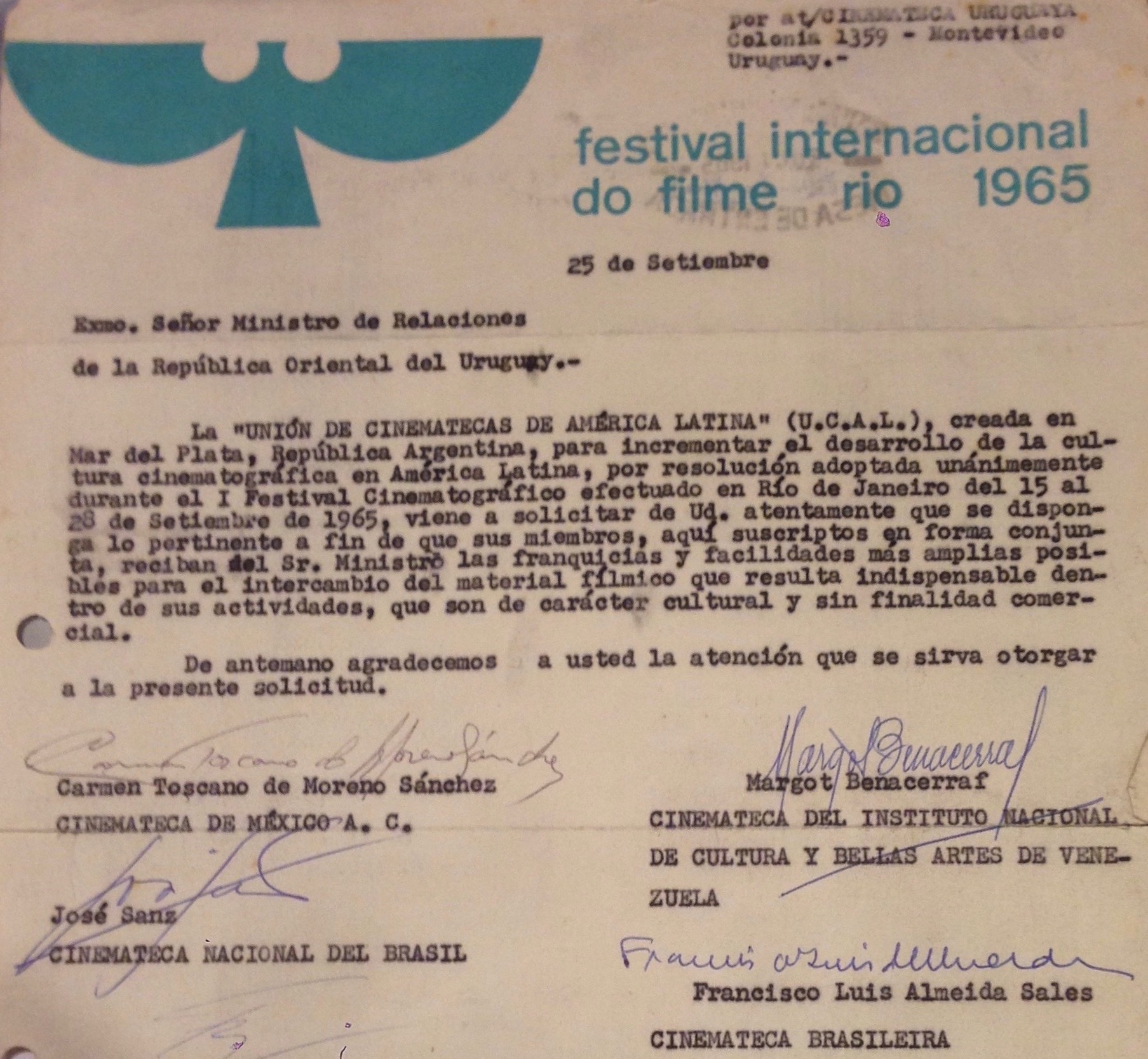
As part of a broader push to take stock of its history, including a forthcoming book and an ongoing initiative to catalog and digitize its records, the International Federation of Film Archives (FIAF, from its initials in French) has made available digitized documents that register the history of Latin American cinémathèques, the first significant bloc of archives outside Europe and the United States to join FIAF.
Latin American cinémathèques capitalized on the federation’s efforts to expand its global reach in the 1950s to obtain film prints and technical and administrative guidance. Yet they also encountered institutional practices designed with Euro-American archives in mind, such as holding yearly conferences exclusively in Europe between 1946 and 1968. The newly released papers document collaborative initiatives developed by Latin American archives to confront shared challenges that FIAF was ill-positioned to address. These initiatives include a regional subsection of FIAF known as the Latin American Pool (1954-1960)—whose history is chronicled by the author of this column in the In Focus section of the current issue of JCMS—the independent Unión de Cinematecas de América Latina (Union of Latin American Cinémathèques,1965-1984), and the Coordinadora Latinoamericana de Archivos de Imágenes en Movimiento (Latin American Coordinator of Moving-Image Archives, 1985-present).
The documents can be accessed here.
Restored Colonial-Era Korean Films Now Streaming Online
Rare examples of Korean cinema produced under Japanese occupation can now be viewed for free on the Korean Film Archive’s Korean Classic Film YouTube channel and its Korean Movie Database website. Identified and remastered through the archive’s Cinémathèque Restoration Project, the trove of films includes two titles shot in the late 1920s: Geulloui Kkeuteneun Ganani Eopda (There is no poverty at the end of labor, Lee Gyu-seol), a comic parable about the value of hard work unearthed in Russia’s Gosfilmofond in 2019, and the newsreel Gyeongseongsosik (News of Seoul), a donation from the Toy Film Museum in Kyoto. A second find from Gosfilmofond is the educational film Ondol (1941), designed to promote the Korean system of underfloor heating referenced in its title in Japan. Newly digitized footage of Korean royal palaces that appeared in the German documentary Kampf um die Mandschurei (Battle in Manchuria, Johannes Häussler and Gustav von Estorff, 1931), acquired from Berlin’s Bundesarchiv in 2004, can also be streamed online.
More information on the films is available here.
Episode Descriptions Boost Accessibility of Early LGBTQ Public Access Show
When the COVID-19 pandemic limited physical access to collection materials, Rachel Mattson, who curates the Jean-Nikolaus Tretter Collection in Lesbian, Gay, Bisexual and Transgender Studies at the University of Minnesota Libraries, directed the archive’s staff to sift through and describe nearly 250 episodes of GAZE-TV, a Minneapolis-based public access program on queer issues produced by journalist, DJ, and theater director Brad Theissen between 1986 and 1992. While digitized tapes from the program were already freely available online from the university libraries’ website, the catalog lacked detailed guides to their contents, which range from discussions of AIDS prevention and activism to coverage of Pride events and profiles of Two-Spirit Native Americans. The new descriptions offer researchers and other users an efficient means of navigating the online collection.
More information on the project can be found here.
“Archival News” reports on recent news highlights from the media archive community for the Journal of Cinema and Media Studies readership. Some information in this column comes courtesy of the Association of Moving Image Archivists (AMIA) listserv, along with institutional newsletters, websites, and press releases. This column is updated quarterly. Contributions to this column are welcomed. Information should be sent to Rielle Navitski, Theatre and Film Studies, University of Georgia, Fine Arts Building, Athens, GA, 30602-3154, email: [email protected]. For news and finds from online media archives, follow @archivalnews on Twitter and Instagram.







